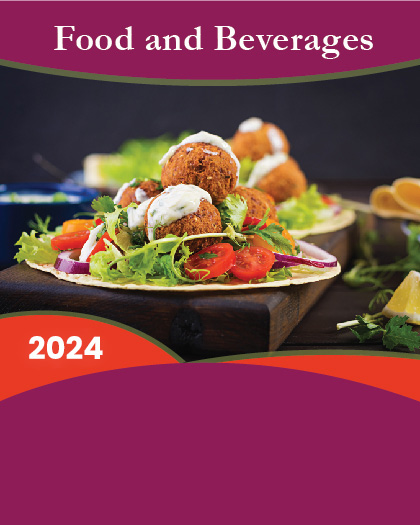1. Preface
1.1. Objectives of the Study
1.2. Market Segmentation & Coverage
1.3. Years Considered for the Study
1.4. Currency & Pricing
1.5. Language
1.6. Stakeholders
2. Research & Forecasting
2.1. Research Methodology
2.1.1. Research Process
2.1.2. Research Framework
2.1.3. Research Reliability & Validity
2.1.4. Research Assumptions
2.2. Forecasting Methodology
2.3. Research Outcome
3. Executive Summary
3.1. Ultra High Temperature Processing Market: Outlook
3.2. Ultra High Temperature Processing Market: Current State & Forecast
4. Premium Insight
4.1. Market Connectivity
4.2. Market Data Feed
4.2.1. Market Sizing & Forecasting, by Type
4.2.2. Market Sizing & Forecasting, by Operation
4.2.3. Market Sizing & Forecasting, by Product Form
4.2.4. Market Sizing & Forecasting, by Application
4.2.5. Market Sizing & Forecasting, by Geography
5. Market Dynamics
5.1. Drivers
5.2. Restraints
5.3. Opportunities
5.4. Challenges
6. Industry Insight
6.1. Porter's Five Forces Analysis
6.1.1. Threat of New Entrants
6.1.2. Threat of Substitutes
6.1.3. Bargaining Power of Customers
6.1.4. Bargaining Power of Suppliers
6.1.5. Industry Rivalry
6.2. Client Customizations
7. Global Ultra High Temperature Processing Market, by Type
7.1. Aseptic Packaging
7.2. Flash Cooling
7.3. Heaters
7.4. Homogenizers
8. Global Ultra High Temperature Processing Market, by Operation
8.1. Direct UHT Processing
8.2. Indirect UHT Processing
9. Global Ultra High Temperature Processing Market, by Product Form
9.1. Liquid
9.2. Semi-liquid
10. Global Ultra High Temperature Processing Market, by Application
10.1. Dairy Desserts
10.2. Juices
10.3. Milk
10.4. Soups
11. Global Ultra High Temperature Processing Market, by Geography
11.1. Americas
11.1.1. Argentina
11.1.2. Brazil
11.1.3. Canada
11.1.4. Mexico
11.1.5. United States
11.2. Asia-Pacific
11.2.1. Australia
11.2.2. China
11.2.3. India
11.2.4. Japan
11.3. Europe, Middle East & Africa
11.3.1. France
11.3.2. Germany
11.3.3. Italy
11.3.4. Spain
11.3.5. United Kingdom
12. Competitive Landscape
12.1. 360iResearch FPNV Positioning Matrix
12.1.1. 360iResearch Quadrants
12.1.1.1. Forefront
12.1.1.2. Pathfinders
12.1.1.3. Niche
12.1.1.4. Vital
12.1.2. Business Strategy
12.1.2.1. Business Growth
12.1.2.2. Industry Coverage
12.1.2.3. Financial Viability
12.1.2.4. Channel Support
12.1.3. Product Satisfaction
12.1.3.1. Value for Money
12.1.3.2. Ease of Use
12.1.3.3. Product Features
12.1.3.4. Customer Support
12.2. Market Vendor Ranking Analysis
12.3. Competitive News Feed Analysis
13. Company Usability Profiles
13.1. MicroThermics
13.1.1. Overview
13.1.2. Strategy
13.1.3. SWOT
13.2. REDA S.p.A
13.2.1. Overview
13.2.2. Strategy
13.2.3. SWOT
13.3. Shanghai Jimei Food Machinery Limited Company
13.3.1. Overview
13.3.2. Strategy
13.3.3. SWOT
13.4. Stephan Machinery GmbH
13.4.1. Overview
13.4.2. Strategy
13.4.3. SWOT
13.5. TESSA I.E.C. GROUP LTD.
13.5.1. Overview
13.5.2. Strategy
13.5.3. SWOT
13.6. Alfa Laval AB
13.7. Elecster Oyj
13.8. GEA Group AG
13.9. SPX FLOW
13.10. Shanghai Triowin Automation Machinery Co., Ltd.
14. Appendix
14.1. Discussion Guide
14.2. 360iResearch Competitive Strategic Window
14.2.1. Leverage Zone
14.2.2. Vantage Zone
14.2.3. Speculative Zone
14.2.4. Bottleneck Zone
14.3. Top Reports
14.3.1. Global Crane Rental Market
14.3.2. Global Computer Vision Market
14.3.3. Global Payment Gateway Market
14.3.4. Global B2B Travel Market
14.3.5. Global Varicose Vein Treatment Devices Market
14.4. Author Details























